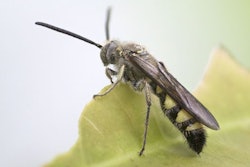
While the benefits of pet ownership for humans have been established, even synthetic pets help those who couldn’t otherwise have a furry companion. For three years, Ultimate Pet Nutrition has sponsored Pets for Vets, a nonprofit organization that finds homes for dogs and cats in shelters with U.S. Armed Forces veterans. Not all of those pets were biological. Pets for Vets has provided dozens of robotic dogs or cats for veterans who’s circumstances precluded a live pet.
“The pets provide comfort, companionship and fun,” Ann Black, president of Pets for Vets’ board of directors. “Because they are interactive, they engage the veteran similarly to a live animal. They help calm anxiety and soothe in stressful situations. Petting a robotic animal works similarly to a live animal. During a period of stress, the act of petting can decrease stress hormones, lower blood pressure, release oxytocin, increase other neurochemicals associated with relaxation, and regulate breathing for the veterans.”
The robotic pet program started during the ongoing pandemic, as an addition to veterinary care and monthly pet food provisions sponsored by Ultimate Pet Nutrition.
Pets for Vets buys the robotic dogs and cats from Joy for All. The robo-rovers and cyber-kitties have sensors that respond to voice and touch allowing them to react when someone enters the room. The robots even have simulated heartbeats that can be felt while petting them.
“The dogs make puppy sounds and will ‘bark back’ in response to the veteran’s voice,” Black said.
The cats raise their paws, roll on their backs, meow and purr.
“The purring vibrates, which contributes to the lifelike feel,” she said.
“Our veterans love the robotic pets!” Black said. “They name them and treat them like live pets.”
About Pets for Vets and Ultimate Pet Nutrition
Headquartered in Wilmington, North Carolina, USA, Pets for Vets, Inc. is a 501(c)(3) nonprofit corporation with chapters in more than 20 states and the District of Columbia, according to a press release. Pets for Vets helps heal the emotional wounds of military veterans by using the power of the human-animal bond to provide a second chance for shelter animals that are rescued, trained and paired with American veterans who could benefit from a companion animal.
Founded by Gary Richter, DVM, Ultimate Pet Nutrition integrates conventional and holistic methods to develop products with health benefits for all dogs and cats, according to a press release. Products include Nutra Complete 100% raw freeze-dried dog food, the Nutra Bites line of freeze-dried raw treats for cats and dogs, the canine supplement Nutra Thrive and Nutra Thrive for Cats.
Robotic pets could meet modern needs
The costs and responsibilities of taking care of pets have contributed towards pet owners choosing smaller dog breeds or cats. Changing lifestyles also push people towards more low maintenance pets, as people move to cities to work long hours while living in cramped urban apartments with no room for a Great Dane, but maybe a cat. For people with even less time, a turtle can thrive with little social interaction. However, no matter how small or anti-social the pet, you can’t turn a pet off.
Like an android, modeled after a human, a zoodroid could take the best qualities of pets, yet never pee on the couch or need boarding during vacation. People could work late or take the kids on one more errand without worrying that the dog was suffering and crossing his legs. Beyond the biological necessities, a doe-eyed, fluffy robot could learn exactly what most amuses its owner by trying millions of behaviors learned from living or fictional animals. A zoodroid could perform chores around the house, like a cuddly Roomba. While dogs only vacuum up lost fries, a zoodroid could clean the rug.
As artificial intelligence and robotics advance, the idea of synthetic pets doesn’t seem so far-fetched. For example, computer scientists developed a program called AutoML-Zero, reported Science. This software develops artificial intelligence programs without any human help by using principles of biological evolution. Computer scientists put artificial intelligence programs to use solving complex algorithms needed to mimic human intelligence. Could an AI learn to be a cat?
A few years ago, scientists at MIT developed a psychopathic AI, named Norman. To develop artificial intelligence, humans use data to teach the machine certain mathematical rules and processes, or algorithms. Norman was raised on a steady diet of the nastiest bits of Reddit. The monstrous AI that resulted interpreted Rorschach inkblots in ways that would have scared Rorschach from “The Watchmen.” For example, a blot that looks like a photo of a bird to another AI, looked like a man getting pulled into a dough machine to Norman. (However, it didn’t cackle, “He’s rolling in dough, now,” or “I really kneaded that,” as a human super-villain would have.)
Most cats aren’t quite that vindictive towards humans. To the contrary, the internet abounds with memes and gifs of kittahs. Could computer scientists use all the cute cat videos on YouTube to create an ultra-adorbs AI that would control a synthetic super pet?
Tamagotchis and other digital pets swept the world in the late 90s. People developed real senses of responsibility and attachment to those beeping lumps of plastic. A realistic synthetic pet could elicit even more love. The uncanny factor might be a problem, as with early computer-generated images. A slightly fake-looking dog would be creepy, like the humans in the first Toy Story. Exotic or fantastic animals might solve this problem since people wouldn’t have a frame of reference for realism. Zoodroid designers could exaggerate neotenic features to make a robo-pet so cute it would shame baby Yoda.
Once engineers and programmers solve those technical details, the zoodroid could rise. It seems absurd to think a Furby-1000 could terminate the pet food industry, but many odd, unexpected new technologies ended up changing the world. The robotic pets of today may seem clunky novelties, but so did early horse-less carriages and moving pictures. If you don’t think advanced zoodroids could be a disruptive technology to the pet food industry, try riding a horse-drawn carriage to a Vaudeville show tonight.















